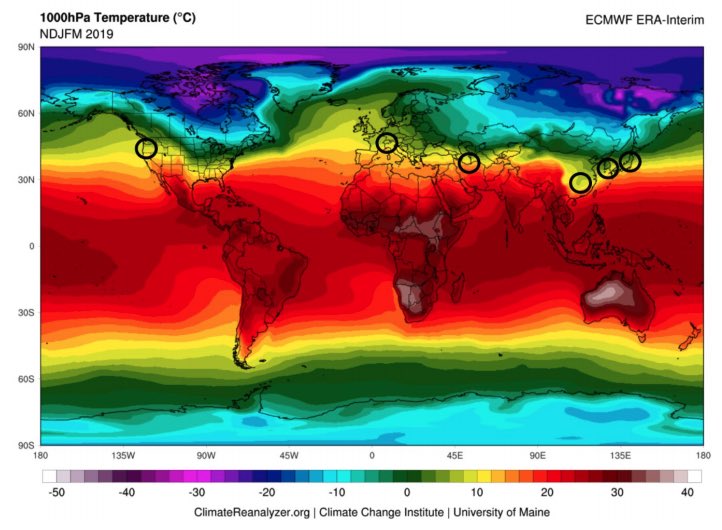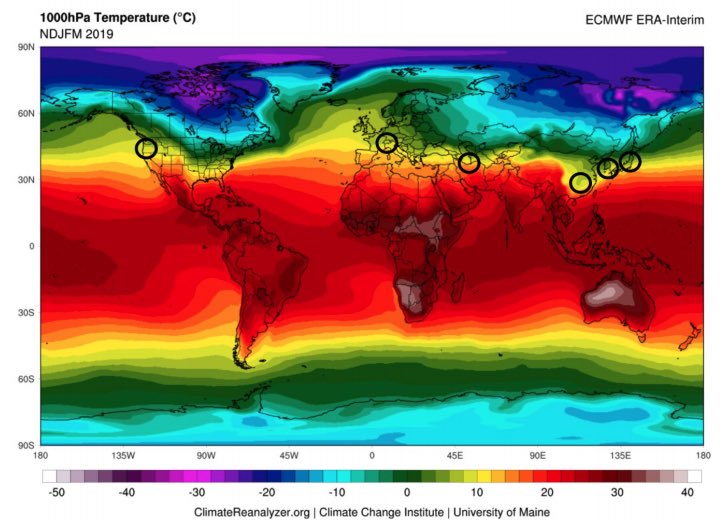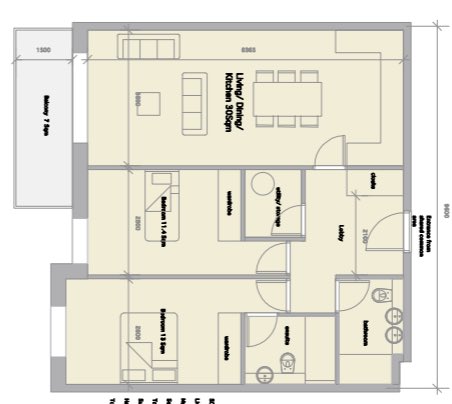
[Thread] Will #Level5 work?
Contacts between people are not all high-risk, & research says that most people with #COVID19 only transmit to 1 other person or fewer.. ‘It’s often not very contagious’ 1/
[ @jljcolorado cires1.colorado.edu/jimenez/COVID/… ]

Contacts between people are not all high-risk, & research says that most people with #COVID19 only transmit to 1 other person or fewer.. ‘It’s often not very contagious’ 1/
[ @jljcolorado cires1.colorado.edu/jimenez/COVID/… ]
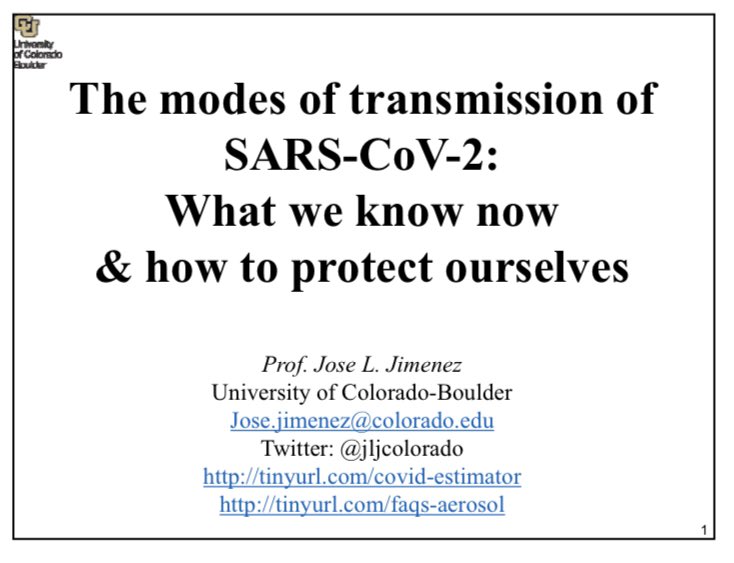
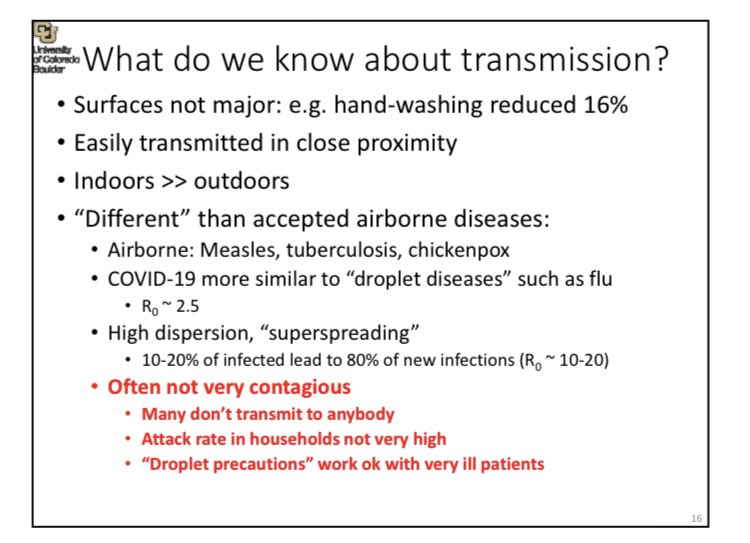
..but a small number of people with covid (less than 20%) are likely infecting more than 80% of new cases... ‘preventing superspreader events could go a long way toward stopping COVID-19’ 2/
[ @svscarpino scientificamerican.com/article/how-su… ]
[ @svscarpino scientificamerican.com/article/how-su… ]
..Germany’s top doctor
‘Most people only pass it to one other.. occasionally, someone spreads more widely, creating a cluster of infections that drives the pandemic. To avoid another lockdown Germany must focus on identifying & preventing clusters’ bloomberg.com/news/features/… 3/
[
‘Most people only pass it to one other.. occasionally, someone spreads more widely, creating a cluster of infections that drives the pandemic. To avoid another lockdown Germany must focus on identifying & preventing clusters’ bloomberg.com/news/features/… 3/
[
..so, high risk places are very different..‘In a care home, the R number is probably 10. For whole population, R number may be below 1.. [an average R] is useful in epidemiology textbook. It is not useful in public health measures’
[Prof Hugh Pennington reaction.life/hugh-penningto…]
[Prof Hugh Pennington reaction.life/hugh-penningto…]
..why does this matter?
NPHET are using average R (reproduction number).. & ‘believes that proactive & robust measures must be taken such that very significant supression of the disease with a reproduction number well below 1.0 is achieved’
[NPHET: assets.gov.ie/89950/7a01b63b… ]
NPHET are using average R (reproduction number).. & ‘believes that proactive & robust measures must be taken such that very significant supression of the disease with a reproduction number well below 1.0 is achieved’
[NPHET: assets.gov.ie/89950/7a01b63b… ]
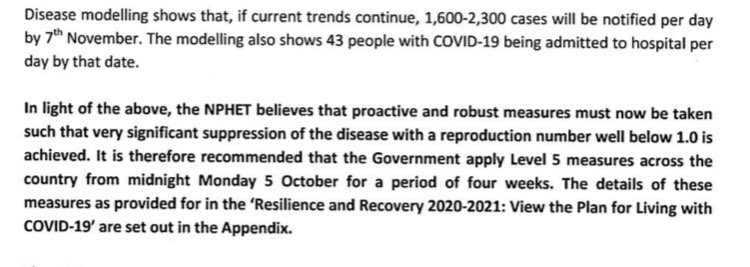
..but R may already be 1 or lower, outside known high-risk ‘super-spread’ conditions..
The risk of pandemic spread here isn’t just contacts, it’s the ~conditions~ where contacts happens (close together, indoors, in poor ventilation)
The risk of pandemic spread here isn’t just contacts, it’s the ~conditions~ where contacts happens (close together, indoors, in poor ventilation)

..What are high-risk settings?
- Nursing homes (170 outbreaks, now >1/3 of all)*
- Pubs/restaurants**
- Schools/colleges*
- Meat plants*
- Overcrowded housing*
- family homes*
- some workplaces
-transport, incl cars*
- gyms, choirs**
*unchanged at #Level5
**closed already
- Nursing homes (170 outbreaks, now >1/3 of all)*
- Pubs/restaurants**
- Schools/colleges*
- Meat plants*
- Overcrowded housing*
- family homes*
- some workplaces
-transport, incl cars*
- gyms, choirs**
*unchanged at #Level5
**closed already
Are any prevention measures planned for high-risk settings at #Level5?
Not known.. but reducing risk in these (high R) places requires targeted public health information, advice & assistance with ventilation/filtration (& enforcement)
[@ShellyMBoulder theconversation.com/how-to-use-ven…]
Not known.. but reducing risk in these (high R) places requires targeted public health information, advice & assistance with ventilation/filtration (& enforcement)
[@ShellyMBoulder theconversation.com/how-to-use-ven…]
& currently NPHET/HPSC rules & advice for buildings are inconsistent, unsafe & out of date.. & importantly don’t acknowledge airborne #Covid19 transmission & how to prevent it
[technical thread here..]
[technical thread here..]
https://twitter.com/orla_hegarty/status/1316276288278212610
*here’s up to date advice from USA researchers
[FAQs on Protecting Yourself from #COVID19 Aerosol Transmission
@ShellyMBoulder @kprather88 @linseymarr @CorsIAQ @jljcolorado & others] docs.google.com/document/u/1/d…
[FAQs on Protecting Yourself from #COVID19 Aerosol Transmission
@ShellyMBoulder @kprather88 @linseymarr @CorsIAQ @jljcolorado & others] docs.google.com/document/u/1/d…
..there may also be seasonal/climactic aspects to this 2nd wave.. the Spring 1st pandemic wave hit hardest in the yellow zone (30-50° latitude, temp 5-11°C) incl Wuhan, NY, Seattle, cities in Italy, Spain, France, UK, &.. Ireland jamanetwork.com/journals/jaman… 
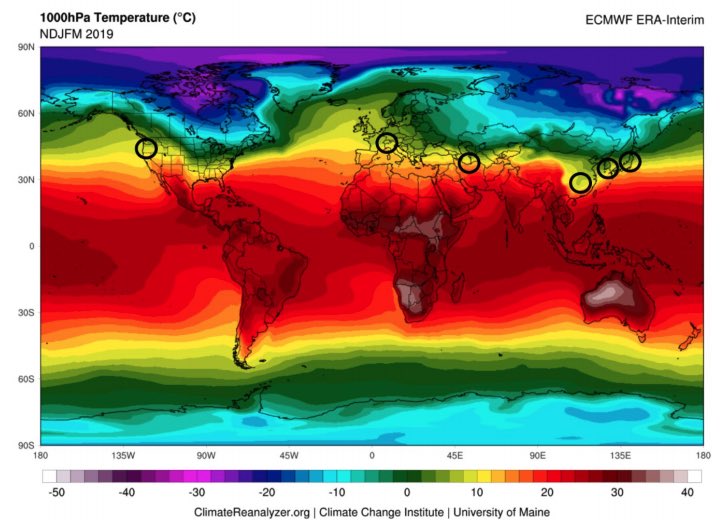
NPHET model for effectiveness of #Level5 doesn’t incl environmental factors; this could be very important.. Spring lockdown had tailwind (rising temps, open windows, outdoor activity, shut schools)..but Autumn lockdown has headwinds (cold, shut windows, open schools & fatigue)
so, it’s not clear why:
🦠NPHET policy isn’t informed by current science (esp airborne transmission, super-spread, indoor safety)
🦠no targeted prevention in high R-rate bldgs
🦠no public health information for easy wins with ventilation advice to homes, cars, shops, schools etc
🦠NPHET policy isn’t informed by current science (esp airborne transmission, super-spread, indoor safety)
🦠no targeted prevention in high R-rate bldgs
🦠no public health information for easy wins with ventilation advice to homes, cars, shops, schools etc
[tl;dr]
NPHET/HSE/HPSC need to engage much wider range of multi-disciplinary expertise, risk management methodologies, & proactive prevention plan
#Level5 is based on assumptions that haven’t been interrogated.. so it may not be effective
NPHET/HSE/HPSC need to engage much wider range of multi-disciplinary expertise, risk management methodologies, & proactive prevention plan
#Level5 is based on assumptions that haven’t been interrogated.. so it may not be effective
• • •
Missing some Tweet in this thread? You can try to
force a refresh




